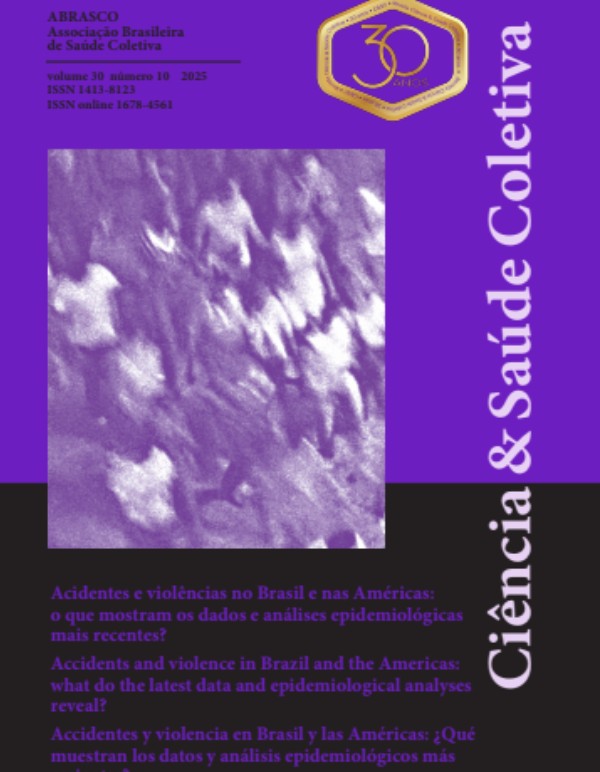0152/2025 - Adult road mortality inequalities in Colombia: challenges in closing the gap and reducing the road incident burden
Desigualdades na mortalidade rodoviária de adultos na Colômbia: fechar lacuna e reduzir carga dos incidentes rodoviários
Autor:
• Ivan Arroyave - Arroyave, I - <ivan.arroyave@udea.edu.co>ORCID: https://orcid.org/0000-0001-9989-5833
Coautor(es):
• Jorge Martín Rodríguez Hernández - Hernández, JMR - <jrodriguez.h@javeriana.edu.co>ORCID: https://orcid.org/0000-0002-7301-7706
• Yamileth Ortiz Gómez - Gómez, YO - <ortizyamileth@javeriana.edu.co>
ORCID: https://orcid.org/0000-0003-1901-400X
Resumo:
Background:Road traffic injuries and deaths are one of the greatest challenges in low- and middle-income countries. In addition, persistent social inequalities have been found in several contexts. This study examines educational inequities in road mortality in adult men and women in total and by age group (young, mature, and senior).
Materials and methods:
Data from national road traffic death registries were linked to population censuses to obtain adult mortality rates by educational level. A Poisson regression was used to model educational inequities using the Relative Inequity Index (RII).
Results:
As in other contexts, a constant decrease in Road Traffic Mortality (RTM) between 1985 and 2010 was found in Colombia. However, as of 2011, a reversal of the trend was found. The reductions were maintained until the end of the period in the educational and age groups least affected by the event: women, young adults (25–44 years), and those who accessed tertiary education. These trends led to growing inequality in mortality from road incidents in the most affected groups.
Conclusions:
For the study period, the striking contribution of adult mortality from road crashes worsened and became more pronounced among older men. There is a need for social policy approaches that address the age group, educational level, and age differences in the risk of fatal events caused by traffic.
Palavras-chave:
Traffic Accident; road safety; Health Inequities, mortalityAbstract:
Antecedentes:Lesões e mortes no trânsito são um dos maiores desafios nos países de baixa e média renda. Além disso, foram encontradas Iniquidades sociais persistentes em vários contextos. Este estudo examina as Iniquidades educacionais na mortalidade rodoviária em homens e mulheres adultos, no total e por faixa etária (jovens, maduros e mais velhos).
Materiais e métodos:
Os dados dos registos nacionais de mortes no trânsito foram ligados aos censos populacionais para obter taxas de mortalidade de adultos por nível educacional. A regressão de Poisson foi utilizada para modelar as iniquidades educacionais por meio do Índice de Iniquidade Relativa (RII).
Resultados:
Tal Como Noutros Países, Na Colômbia Constatou-Se Uma Diminuição Constante Da Mortalidade por Sinistros de Trânsito (MST) entre 1985 e 2010, com uma inversão da tendência a partir de 2011. As reduções mantiveram-se até ao final do período nas faixas educacionais e etárias menos afetadas pelo evento: mulheres, jovens adultos (25 a 44 anos) e aqueles que acederam ao ensino superior. Estas tendências levaram a uma crescente Iniquidade na mortalidade por acidentes de trânsito entre os grupos mais desfavorecidos.
Conclusões:
No período do estudo, a elevada contribuição da mortalidade adulta por acidentes de trânsito piorou e tornou-se mais pronunciada entre os homens mais velhos. É necessário adoptar abordagens de política social que abordem a faixa etária, o nível educacional e as diferenças etárias no risco de acidentes de viação fatais.













